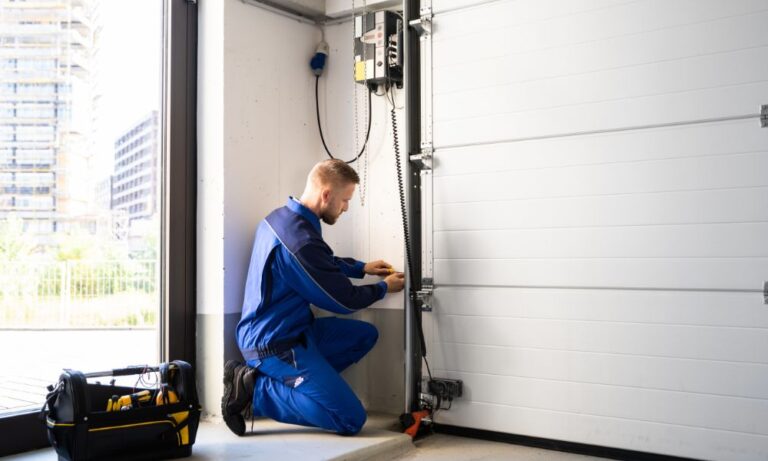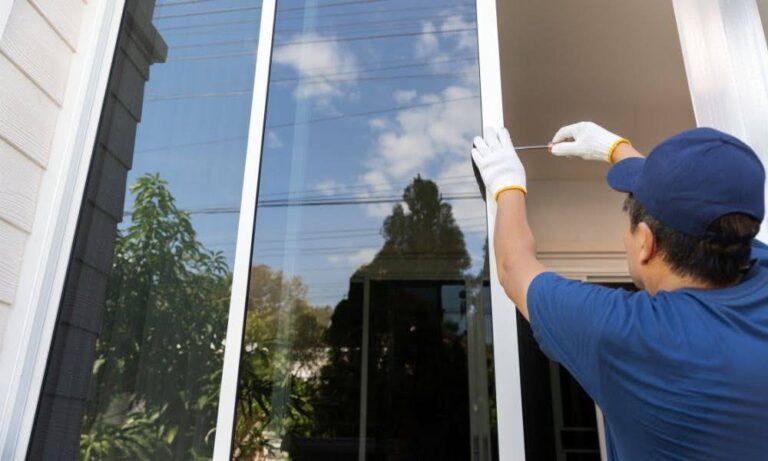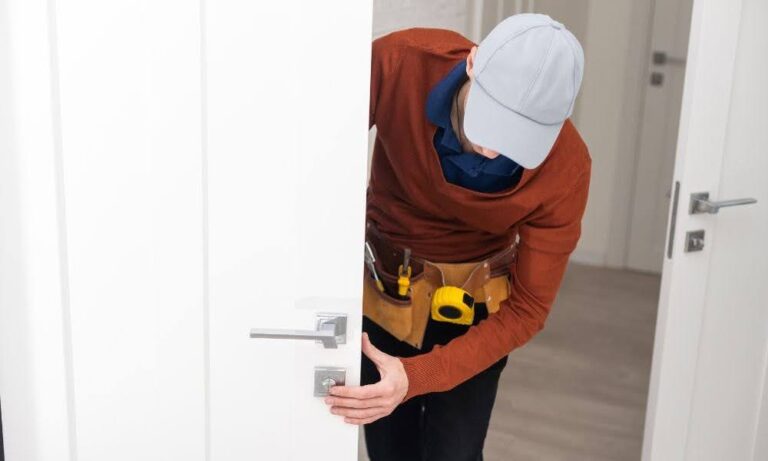Insulate Your Garage Door and Unlock Energy Savings All Year Round
Insulating a garage door is a crucial step in maintaining energy efficiency and comfort within your home. By providing an additional barrier to the outdoor elements, insulation helps to stabilize the temperature inside the garage, which can have a significant impact, particularly if the garage is attached to the house.
This not only helps in reducing energy bills by minimizing the workload on heating and cooling systems but also enhances the overall comfort of the living spaces adjacent to the garage. Furthermore, it protects any valuable items stored in the garage from extreme temperatures, ensuring their longevity.
Insulating garage doors brings several benefits that extend beyond energy savings. Firstly, insulation can reduce noise, making the garage a quieter space and preventing unwanted sounds from entering the home. This can be particularly beneficial if the garage is used as a workshop or a recreational area.
Secondly, insulated garage doors tend to be more durable and can withstand impact better than non-insulated ones, adding to your door’s lifespan.
Finally, insulation can increase the home’s resale value, as potential buyers often regard energy-efficient upgrades as attractive features. It doesn’t matter if you use garage door insulation kits they will make your home more valuable than if you had an uninsulated garage door, since it protects people from cold air.
Understanding Garage Door Insulation
An insulated garage door involves adding a layer of material to either the inside or the outside of a garage door to reduce heat transfer.
Insulating your garage door can help maintain a more consistent temperature in your garage, lessen noise from outside, and improve the energy efficiency of your home.
Types of Insulation Materials for Garage Doors
Reflective Insulation
Reflective insulation is typically made of aluminum foil or a similar reflective material. It works by reflecting radiant heat away from the surface to which it is applied, making it particularly effective in hot climates.
This type of insulation is easy to install and is often used in combination with other insulation materials.
Foam Board Insulation
Foam board insulation consists of rigid panels of insulation that provide excellent thermal resistance, which can come in a garage insulation kit.
It is generally made from materials like polystyrene, polyisocyanurate, or polyurethane. Foam board insulation is lightweight and easy to cut, making it a popular choice for garage door insulation.
Fiberglass Insulation
Fiberglass insulation is composed of fine strands of glass and is typically found in batts or rolls. It’s well-known for its effectiveness in controlling temperature and its affordability.
Fiberglass insulation can be fitted into the panels of garage doors to provide substantial thermal resistance and noise reduction.
Polystyrene Insulation
Polystyrene insulation comes in two forms: expanded polystyrene (EPS) and extruded polystyrene (XPS). Both types offer excellent thermal performance and moisture resistance.
EPS is lighter and more affordable, while XPS is denser and offers a higher R-value, which measures the insulation’s effectiveness. Polystyrene insulation is often used in commercial and residential garage doors due to its durability and insulation properties.
Assessing Your Garage Door
Before you begin the process of insulating your garage door, it’s essential to assess its current condition and determine if insulation is necessary. Proper insulation can help regulate temperature, reduce energy costs, and increase comfort.
Determining if Your Garage Door Needs Insulation
To decide if your garage door needs insulation, consider the following questions:
- Does your garage get excessively hot or cold depending on the weather outside?
- Is the garage attached to your home, potentially affecting indoor temperatures?
- Do you use the garage as a workspace or for any activity where temperature comfort is essential?
If you answered “yes” to any of these questions, insulating your garage door could be beneficial.
Factors to Consider Before Insulating
Before you begin, take into account these factors:
- The age and current condition of your garage door: Older doors might need repairs or replacement.
- The type of insulation that suits your needs: Various materials are available, each with its benefits.
- Your budget: Insulation projects can vary in cost depending on the materials and labor involved.
Climate Considerations
Your local climate plays a significant role in determining the necessity and type of insulation. In cooler regions, insulation can help retain heat, whereas, in warmer climates, it can keep the garage cooler.
It’s important to choose an insulation material with an appropriate R-value, which measures its thermal resistance, to match your climate needs.
Garage Door Material
The material of your garage door will also affect the insulation process:
- Wooden Doors: These doors offer natural insulation but might benefit from additional materials for improved efficiency.
- Steel Doors: Often require foam board or reflective insulation to enhance thermal performance.
- Aluminum Doors: Lightweight but generally need robust insulation solutions to counteract poor thermal resistance.
By taking these factors into account, you’ll be able to make a well-informed decision about insulating your garage door, ensuring optimal comfort and energy efficiency.
Preparation for Insulation
Before you begin insulating your garage door, it’s essential to prepare adequately to ensure a smooth and efficient process. Here are the steps to follow:
Tools and Materials Needed
To insulate a garage door, you’ll need the following tools and materials:
- Insulation panels or rolls (foam board, reflective insulation, or fiberglass batt)
- Measuring tape
- Utility knife or scissors
- Straight edge or ruler
- Adhesive (such as a strong construction adhesive or double-sided tape)
- Garage door insulation kit (optional but helpful, it often includes pre-cut panels and fasteners)
- Personal protective equipment (gloves, safety glasses, dust mask)
- Ladder or sturdy step stool
Safety Precautions to Follow
When working on your garage door insulation project, safety should be your top priority. Follow these safety precautions to minimize risks:
- Wear Appropriate PPE: Always wear protective gloves, safety glasses, and a dust mask to protect yourself from insulation particles and sharp tools.
- Work in a Well-Ventilated Area: Ensure your garage is well-ventilated while cutting insulation materials, especially if you’re working with fiberglass.
- Use a Stable Ladder: If you need to reach high areas, use a stable ladder or step stool to prevent falls.
- Handle Sharp Tools with Care: Be cautious when using utility knives or scissors to avoid accidental cuts.
- Read Manufacturer Instructions: Follow the manufacturer’s guidelines for both the insulation materials and adhesive to ensure proper application and safety.
Proper preparation will set the foundation for a successful garage door insulation project, leading to improved energy efficiency and comfort in your garage.
Steps to Insulate a Garage Door
Step 1: Measure and Prepare
Measuring the Garage Door Panels
Begin by measuring the dimensions of each garage door panel. Accurate measurements ensure that the insulation material fits snugly, providing optimal thermal protection. Record the height and width of each panel.
Cleaning and Preparing the Surface
Before applying insulation, clean the surface of the garage door panels thoroughly. Remove any dust, dirt, or grease using a mild detergent and water. This will help the insulation adhere properly and prevent any future issues.
Step 2: Choosing the Right Insulation
Selecting the Appropriate R-value
The R-value indicates the insulation’s resistance to heat flow. Choose an insulation material with a suitable R-value for your climate. Higher R-values provide better thermal resistance but may be thicker and harder to install.
Considering Ease of Installation
Consider the ease of installation when selecting your insulation. Some materials, like foam boards, are simpler to cut and fit into place. Others, such as reflective insulation, may require additional fasteners or adhesive.
Step 3: Applying Insulation
Methods of Applying Insulation
There are various methods for applying insulation to a garage door, including foam boards, reflective barriers, and spray foam. Choose the best method based on your door type and insulation material.
Spray Foam Application
Spray foam insulation can fill small gaps and irregular surfaces effectively. When using spray foam, apply it evenly across the door panels and allow it to expand and cure according to the manufacturer’s instructions.
Panel Installation
For rigid foam boards or reflective insulation panels, cut the material to fit each door panel. Secure the panels using adhesive, double-sided tape, or clips as recommended by the manufacturer. Make sure the insulation is flush against the door surface.
Step 4: Securing Insulation
Ensuring Proper Attachment
After placing the insulation, ensure it is properly attached to the garage door panels. Check for any loose sections and reinforce them with additional adhesive or fasteners as needed.
Sealing Gaps and Edges
Finally, seal any gaps and edges around the insulation using weatherstripping or caulk. This will prevent air leaks, enhance insulation performance, and keep your garage more energy-efficient.
DIY vs. Professional Installation
Pros and Cons of DIY Insulation
Pros:
- Cost Savings: One of the primary advantages of insulating your garage door yourself is the potential for significant cost savings. DIY kits are generally more affordable compared to hiring professional services.
- Control: DIY allows you to work on your own schedule, choosing the materials and methods that best suit your needs.
- Satisfaction: Completing a DIY project can be incredibly rewarding, providing a sense of accomplishment and self-sufficiency.
Cons:
- Time-Consuming: DIY insulation can be time-intensive, particularly if you’re inexperienced or encounter unforeseen challenges.
- Skill Level: Achieving a professional-quality job requires a certain level of skill and knowledge, which might be lacking for some individuals.
- Limited Warranty: Materials purchased for DIY projects may have limited or no warranties, unlike professional services that often include a guarantee.
When to Consider Professional Help
Opting for professional installation is advisable in several scenarios:
- Complex Installations: If your garage door has a more complex structure, or if there are existing issues such as damage or irregularities, a professional can handle these challenges more effectively.
- Time Constraints: When you need the job done quickly or simply do not have the time to invest in a DIY project, professionals can complete the task efficiently.
- Quality Assurance: Professionals bring experience and expertise, ensuring a higher-quality installation that may offer better insulation performance and longevity.
- Safety: Insulating a garage door can involve working with tools and materials that pose safety risks. Professionals are trained to manage these safely.
Maintaining Insulation Effectiveness
Regularly inspecting and maintaining your garage door insulation is crucial to ensure it remains effective.
Over time, insulation can degrade due to various factors. Here are some tips to help you maintain its effectiveness:
Regular Inspections and Maintenance Tips
- Visual Inspections: Periodically check the insulation material for any visible signs of wear and tear, such as rips, holes, or compression.
- Seal Check: Ensure that all seals around the door are intact and not allowing air to seep through. Replace any damaged weatherstripping as needed.
- Cleaning: Keep the door and its surroundings clean to prevent dust and debris from compromising the insulation.
- Lubrication: Regularly lubricate moving parts of the door to ensure smooth operation and prevent additional strain that could affect the insulation.
Dealing with Common Issues Like Moisture and Pests
- Moisture Control: Moisture can severely damage insulation materials, leading to mold growth and reduced effectiveness. Ensure your garage is well-ventilated and consider using a dehumidifier if necessary. Check for and repair any leaks in the roof or walls immediately.
- Pest Prevention: Pests such as rodents can chew through insulation, causing significant damage. Use pest repellents and seal any small gaps or entry points to keep them out. Regularly inspect for signs of pest activity, such as droppings or gnaw marks, and take action promptly if any are found.
By following these guidelines, you can keep your garage door insulation in top condition, ensuring your garage remains energy-efficient and comfortable.
Conclusion
In conclusion, insulating your garage door offers a multitude of benefits that enhance both comfort and efficiency in your home.
Key benefits include improved temperature regulation, which helps in maintaining a more consistent climate inside your garage. This can translate to reduced energy costs, as your heating and cooling systems don’t need to work as hard.
Additionally, insulation acts as a sound barrier, reducing noise from outside and making your garage a quieter space.
When insulating your garage door, ensure you choose the right type of insulation material that fits your specific needs, whether it’s reflective foil, foam board, or fiberglass batts. Properly measure and cut the insulation to ensure a snug fit, and take the time to seal any gaps to maximize efficiency.
Lastly, safety is paramount, so make sure to follow all safety guidelines, including wearing protective gear and handling tools cautiously. By following these tips, you can effectively insulate your garage door and enjoy the long-term benefits it brings.








